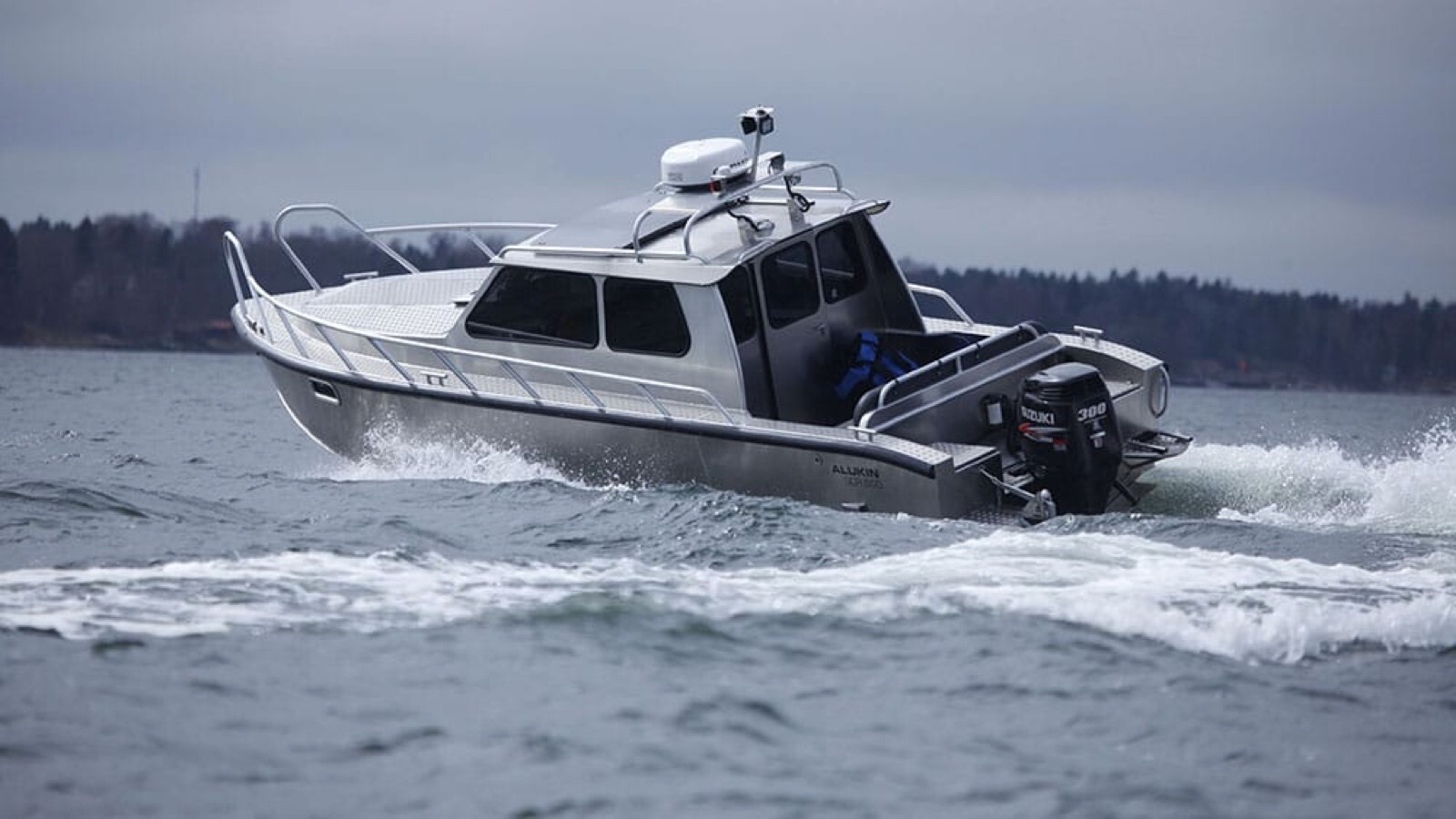

Since the 1950s, fibreglass had, for an elongated span of time, taken over the boat manufacturing industry. However, aluminium had been a choice prior and is coming back to the market yet again, all with good reasons.

Aluminium is a lightweight material with post-repair strength equivalent to new. The protective layer of aluminium oxide formed on the bare outer body of any aluminium-built boat adds a natural greyish tone to the boat's look. Above all, unlike other materials, aluminium boats do not fade over time due to exposure to UV rays.
But how did aluminium lose its fanbase?
In the early 1960s, boat sales skyrocketed in the United States. Manufacturers needed a cost-effective material that was easy to mould, did not need much maintenance, and could retain its look and feel for years. Fibreglass ticked all the boxes and became the primary choice.
Did the non-ferrous metal lose the game once and for all?
Even back then, fishermen who skimmed through shallow waters preferred aluminium boats as the occasional collisions with rocks had little impact on the metal plates. Even customised sailboats and power boats were often constructed of welded aluminium, majorly as fibreglass could not serve as custom work material. Top racing sailboats in the 1960s to 1970s were also custom-built of aluminium, such as the 12-metre 'Courageous' that fended for the America's Cup in 1974 and 1977.
Benefits to consider
Most structural features of an aluminium vessel are built with 5000 series alloys. Both 5083 and 5086 are sturdy, corrosion-resistant, and retain almost all their strength when welded, making them exemplary for hull plating and framing.
For leisure boat owners, the appeal of aluminium lies in its minimal maintenance requirements. With no need for compounding, waxing, polishing, or worrying about gelcoat crazing, aluminium boats allow owners to focus on what matters - enjoying their time on the water.
Aluminium can be recycled if needed and used to make new models of boats as it is as good as new. In fact, many newly built boats are made of recycled metal. Meanwhile, fibreglass can be recycled, too, but with much more hassle and less impactful results. Discarded fibreglass can be powdered and used in a variety of industries—as filler for asphalt, for instance. However, petroleum-produced fibreglass resin isn't recycled and ends up on the trash pile, while aluminium, made from bauxite, one of the world's most abundant ores, can be given a second life.
Companies to watch out for
Many companies around the world, realising the importance of metals' usage in the sailing sector, have indulged in manufacturing specialised water vehicles in standard and customised models.
Stanley Boats
Connor Industries is known worldwide for its custom-welded aluminium boats under the brand name STANLEY.
KM Yachtbuilders
The company has been building aluminium yachts since 1998. KM Yachtbuilders has pioneered innovative and no-nonsense aluminium yacht construction, prioritising safety and adventure.
Henley Boats
This is the only company building heavy aluminium boats with lapstrake sides anywhere. For over 40 years, Henley Boats claims to have been designed and built without compromise. It insists on building its boats using the best materials, the most modern welding methods, and proven and approved designs.
Allsea Boats
Allsea Boats was established in 2021 and is located in Qingdao, the sailing capital. The company covers 12,000 square metres, including 11,000 square meters of standardised workshops and 1,000 square meters of office buildings. The core team members have nearly 20 years of experience in the production and R&D of aluminium alloy fishing boats and currently have 8 utility model patents, 2 appearance patents, 2 software copyrights, and 13 products have obtained European CE certification, and the products are exported to all over the world.
Circa Marine
For over 40 years, Circa Marine has excelled in high-quality aluminium fabrication. Their dedicated workshops in Whangarei, New Zealand, offer a full design and build package for new yachts, motor yachts, ferry, rescue, pilot vessels, workboats, and fishing boats/barges up to a maximum length of 40 metres. All work is completed in-house by their highly experienced NZMITO-trained and skilled staff.
Responses








